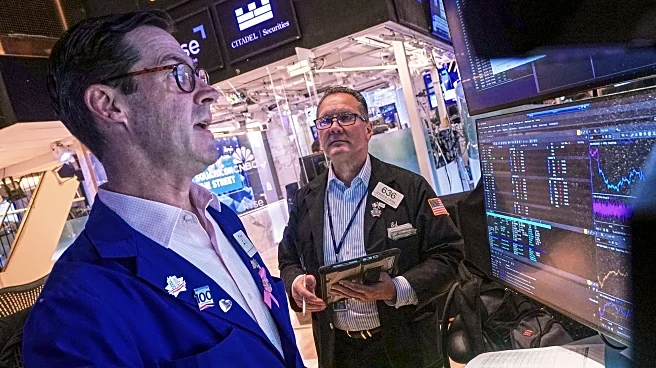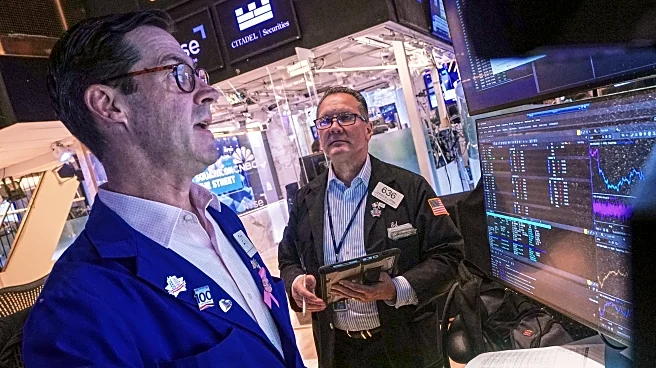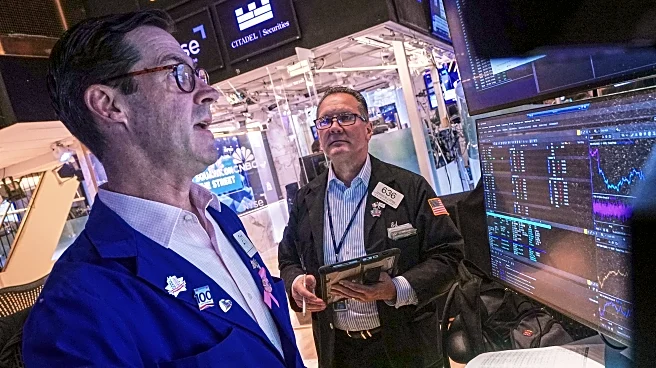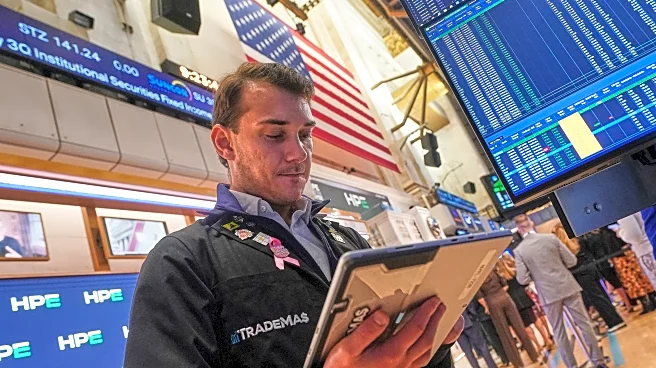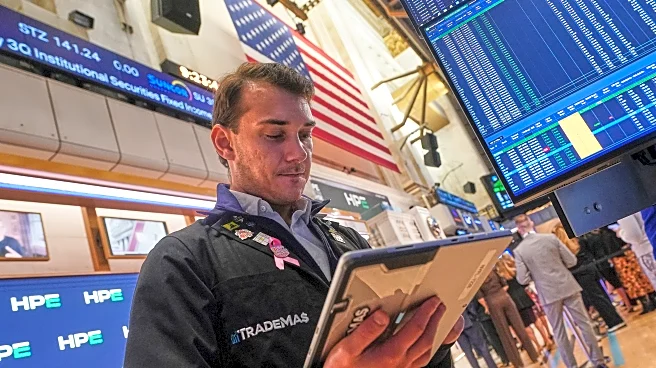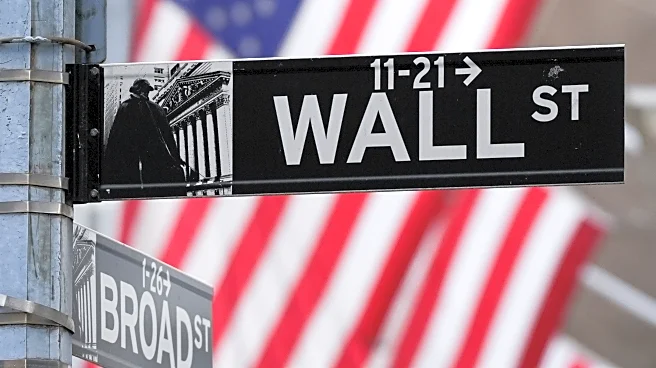What's Happening?
The U.S. stock market has shown resilience despite recent fluctuations and investor concerns. Analysts from firms like Goldman Sachs and Wells Fargo have raised their forecasts for the S&P 500, expecting
it to climb by the end of the year. David Lefkowitz from UBS Global Wealth Management suggests that a sharp sell-off is unlikely due to solid U.S. economic growth and reduced borrowing costs by the central bank. The S&P 500 has increased by approximately 13% this year, driven by corporate profit improvements and enthusiasm for artificial intelligence (AI). However, concerns about potential bubbles in the AI industry and recent banking sector issues have contributed to market jitters.
Why It's Important?
The stock market's performance is crucial for investors, businesses, and the broader economy. The optimism from analysts suggests confidence in continued economic growth, which could benefit investors and companies. However, the concerns about AI bubbles and banking sector issues highlight potential risks that could impact market stability. The market's resilience, despite these concerns, indicates underlying economic strength, but also suggests that investors should remain cautious. The potential for a market correction remains, as noted by the Bank of England and other financial institutions, which could affect investor confidence and economic stability.
What's Next?
Analysts expect the S&P 500 to continue its upward trajectory, potentially reaching around 6,900 points by year-end. However, ongoing geopolitical tensions, trade issues, and domestic economic policies could influence market dynamics. Investors will likely monitor these factors closely, along with developments in the AI sector and banking industry. The potential for a market correction remains, and stakeholders will need to assess risks and adjust strategies accordingly. The U.S. central bank's policies and economic indicators will also play a significant role in shaping future market trends.
Beyond the Headlines
The current market situation underscores the complex interplay between technological advancements, economic policies, and investor sentiment. The enthusiasm for AI reflects broader technological shifts that could redefine industries and economic structures. However, the potential for bubbles in this sector raises questions about sustainable growth and valuation metrics. Additionally, the banking sector's challenges highlight the importance of regulatory oversight and risk management in maintaining financial stability. These factors collectively suggest a need for balanced investment strategies that consider both opportunities and risks in a rapidly evolving economic landscape.




